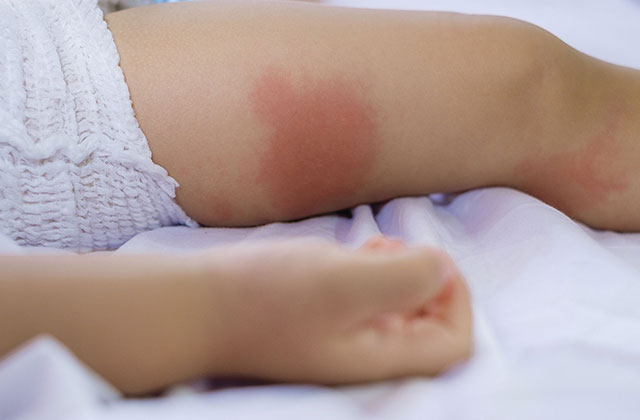There it is again, that itch in your arm. You have been scratching it for a while now and when you decide to take a closer look, you see an elevated ring-shaped patch. It was then that you realize – you have ringworm.
A ringworm per se is not a worm. It is a fungi infection that is also known as tinea, dermatophytosis, or dermatophyte. It’s a rash that sometimes comes with raised bumps that form into its signature circle shape. This is caused by fungi that feed and thrive on dead skin cells in your body.
Ringworm infection can be found on your arm, neck, legs, scalp, or nails. If it appears on your feet or toes, it’s commonly called athletes foot or tinea pedis. If it is in the scalp, it is referred to as tinea capitis. Tinea Crucis happens if the ringworm infection reaches the groin, buttocks, or thigh area. And the general ringworm of the body is what’s known as tinea corporis.
How do you know that you are dealing with a ringworm infection? Here are some common symptoms you might encounter:
· Plaques or elevated skin areas that may sometimes be scaly or reddish;
· Blisters and pustules in the affected area
· The tell-tale ring shape of the patches
· Tinge of redness in the outer area of the patch
· Itchiness of the affected area.
The bad news is, a ringworm infection can easily spread from one part of your body to another or from one person to another. That is why you need to treat this fungal infection as soon as you notice it on your body or your family or loved one’s skin.
The best thing that you can do to get rid of ringworm is to consult a doctor or dermatologist for treatment and medication. However, there are also things that you can do at home to prevent its spread, manage the symptoms, or get rid of it the natural way.
1. Wash your belongings.
If you have a ringworm infection, the first thing that you have to do is to wash your belongings that frequently touch the affected area. The belongings we are talking about may include articles of clothing, bedsheets, pillowcases, towels, socks, or undergarments. Just to be safe, you can also wash shoes, bags, or other accessories that may come into contact with the affected area.
2. Wash your hands.
It is important that every time you scratch or touch the ringworm patches, you have to immediately wash your hands to avoid infecting other parts of your body or other people. Hand washing is also important if you are applying topical creams to the affected area. Always remember to wash your hands after applying medicine to a ringworm patch. This is to avoid the spread of the fungal infection to another body area.
3. Don’t share belongings.
If you do not want to share the ringworm infection with your family and loved ones, then do not share your belongings! In the meantime, avoid stepping on family mats and refrain from using common towels. Separate your things. Additionally, do not borrow items or clothing from other people. The fungi can thrive in warm and damp environments, so it is important to keep everything clean. This is a good time to keep your things to yourself!
4. Keep the infected area dry.
Avoid clothing that will easily make you sweat. Instead, choose clothes made of moisture-wicking or breathable material.
5. Use apple cider vinegar or tea tree oil as natural anti-fungal treatments.
If you are interested in natural treatments, remember that apple cider vinegar and tea tree oil have antifungal properties. Soak your cotton round in pure apple cider vinegar and apply it on the affected skin. Repeat three times a day. If the smell of apple cider vinegar is too strong for you (especially if you often go out), an alternative is tea tree oil. Just dab the oil on the affected area in the morning, noon, and night time using cotton buds or cotton swabs. You can also use your hands but remember, you need to wash with soap and water after every application.
6. Treat the infection with a topical cream.
Anti-fungal cream is an effective remedy against ringworm. There are over the counter topical creams which effectively get rid of fungal infection. Just follow the instructions in the package when you apply the medicine. Examples of topical creams are miconazole, clotrimazole, and terbinafine.
7. Get diagnosed and treated as soon as possible.
As mentioned earlier, the best way to fight a ringworm infection is if you get diagnosed and treated early. Find a dermatologist or doctor in a walk in clinic Thunder Bay near you. If you cannot physically go to a doctor because of the COVID-19 situation, consider contacting an online doctor instead. That way, you can still get diagnosed and treated while inside your home.
Think you have ringworm? Find yourself a doctor today.
